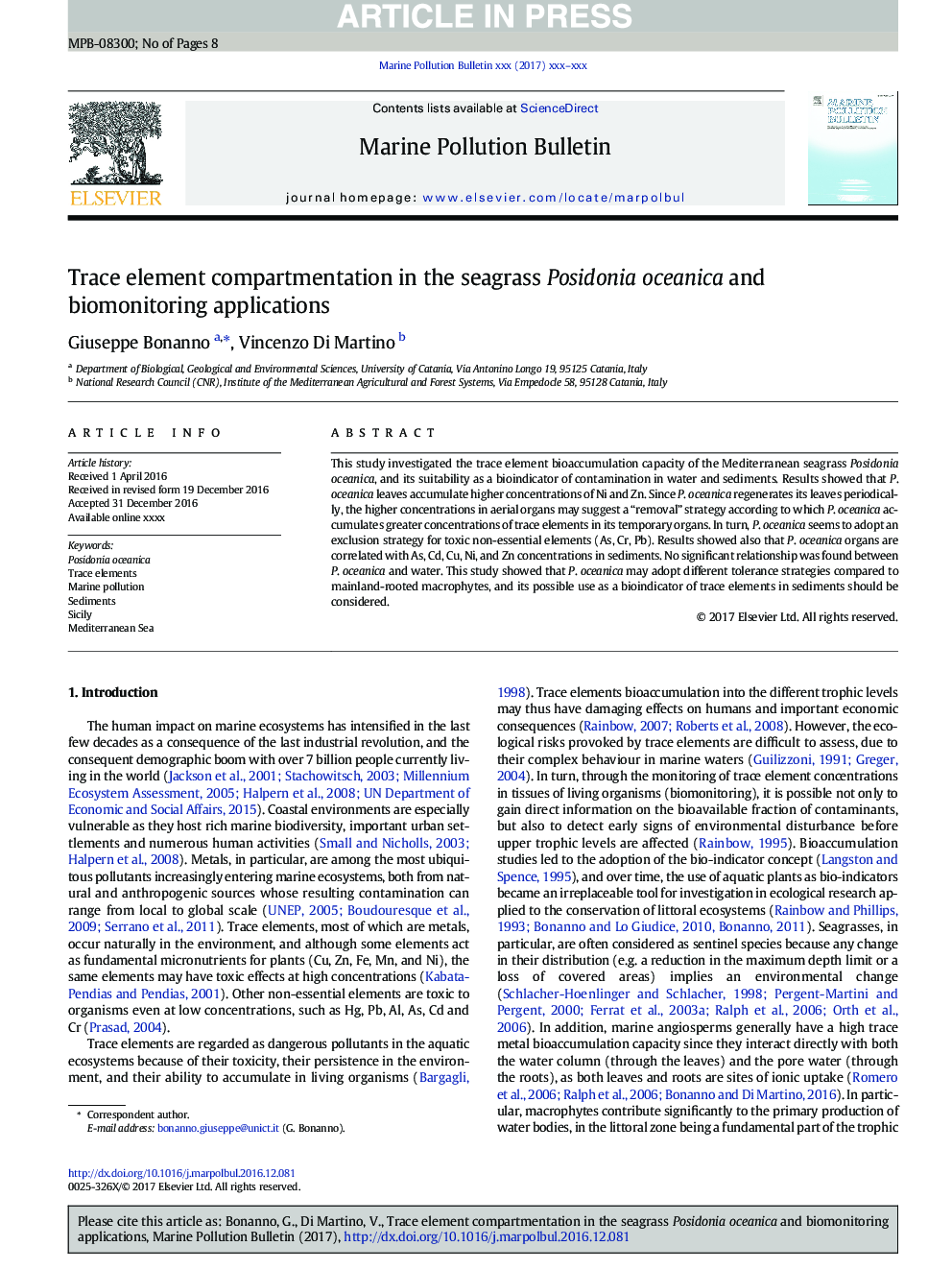| Article ID | Journal | Published Year | Pages | File Type |
|---|---|---|---|---|
| 5757599 | Marine Pollution Bulletin | 2017 | 8 Pages |
Abstract
This study investigated the trace element bioaccumulation capacity of the Mediterranean seagrass Posidonia oceanica, and its suitability as a bioindicator of contamination in water and sediments. Results showed that P. oceanica leaves accumulate higher concentrations of Ni and Zn. Since P. oceanica regenerates its leaves periodically, the higher concentrations in aerial organs may suggest a “removal” strategy according to which P. oceanica accumulates greater concentrations of trace elements in its temporary organs. In turn, P. oceanica seems to adopt an exclusion strategy for toxic non-essential elements (As, Cr, Pb). Results showed also that P. oceanica organs are correlated with As, Cd, Cu, Ni, and Zn concentrations in sediments. No significant relationship was found between P. oceanica and water. This study showed that P. oceanica may adopt different tolerance strategies compared to mainland-rooted macrophytes, and its possible use as a bioindicator of trace elements in sediments should be considered.
Related Topics
Physical Sciences and Engineering
Earth and Planetary Sciences
Oceanography
Authors
Giuseppe Bonanno, Vincenzo Di Martino,
